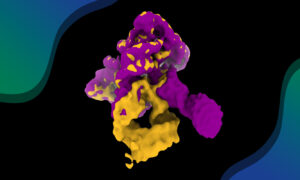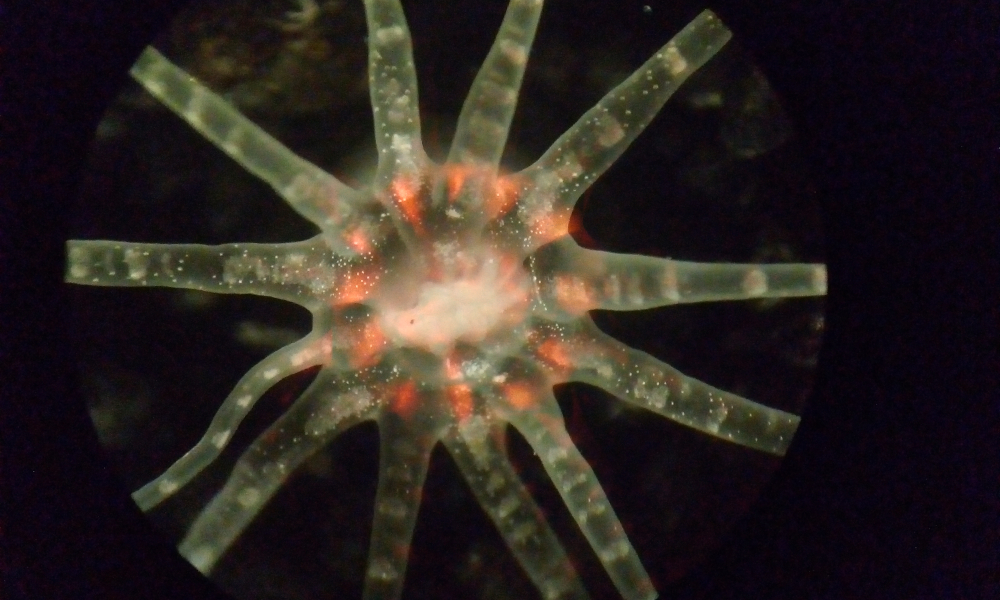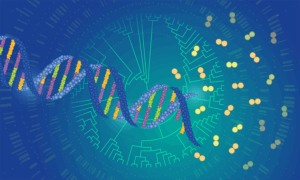
Shine like an underwater star

Over the course of their life, from a single cell to a fully-grown adult, animals are exposed to constantly changing environments. It is widely recognised that there is a dynamic interaction between developmental and physiological processes to create a particular shape in the body. But how do environmental factors contribute to an animal’s shape? Researchers from the Ikmi Group at EMBL Heidelberg want to answer this question.
The group uses the starlet sea anemone (Nematostella vectensis) as a model organism. This anemone is a relatively simple animal, but it displays a striking morphological feature: It can remodel and grow back its tentacles in response to different changes in their environment, such as nutrient availability, stress and injury.
This image of the starlet sea anemone was taken by Petrus Steenbergen using a 2.5x magnification under a stereoscope, which creates the three-dimensional feel of the picture. The red colour is caused by a protein that is naturally present in the anemone’s equivalent of a mouth. While it makes for a stunning picture, the function of this red fluorescent protein is actually unknown.
Credit: Petrus Steenbergen/EMBL


